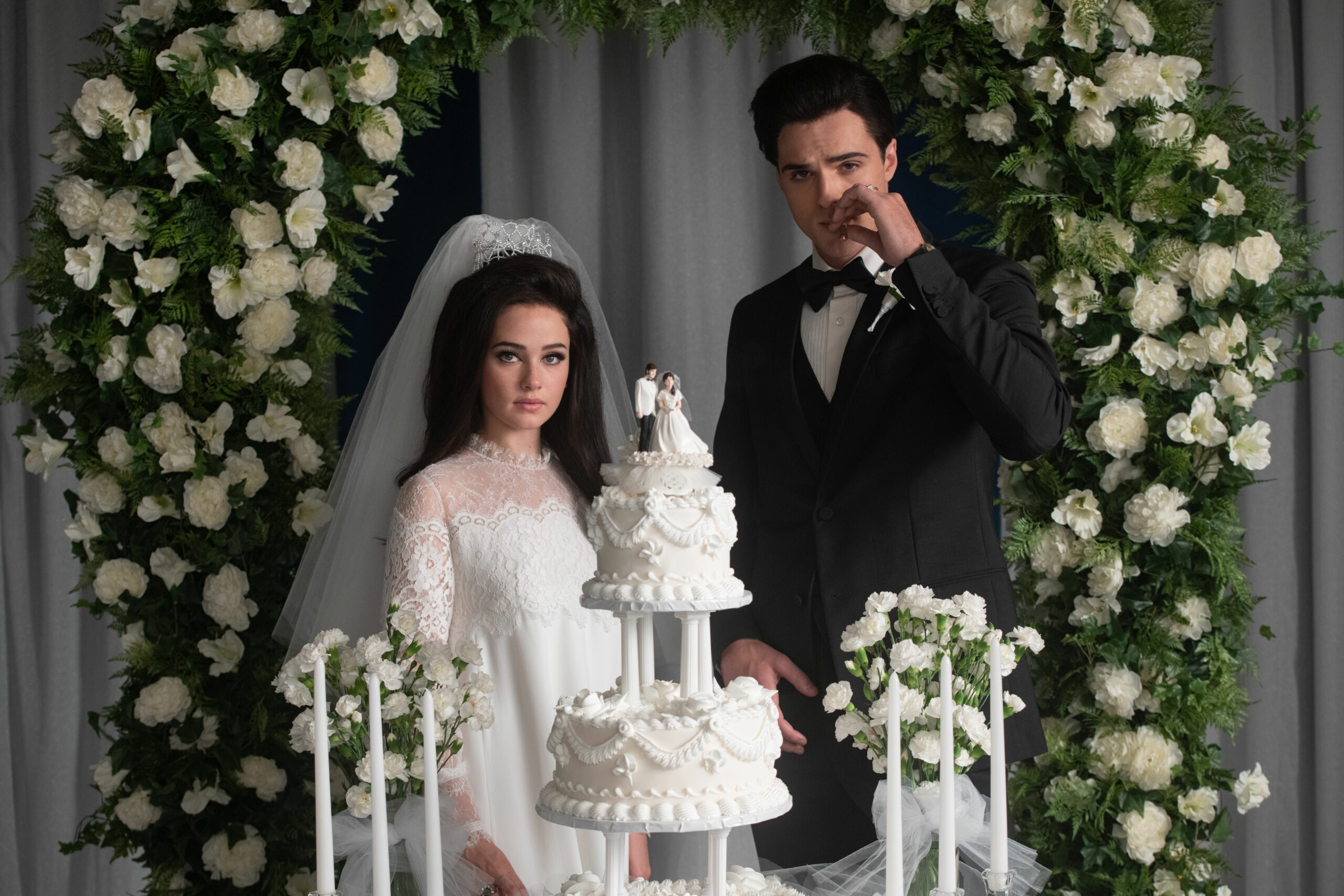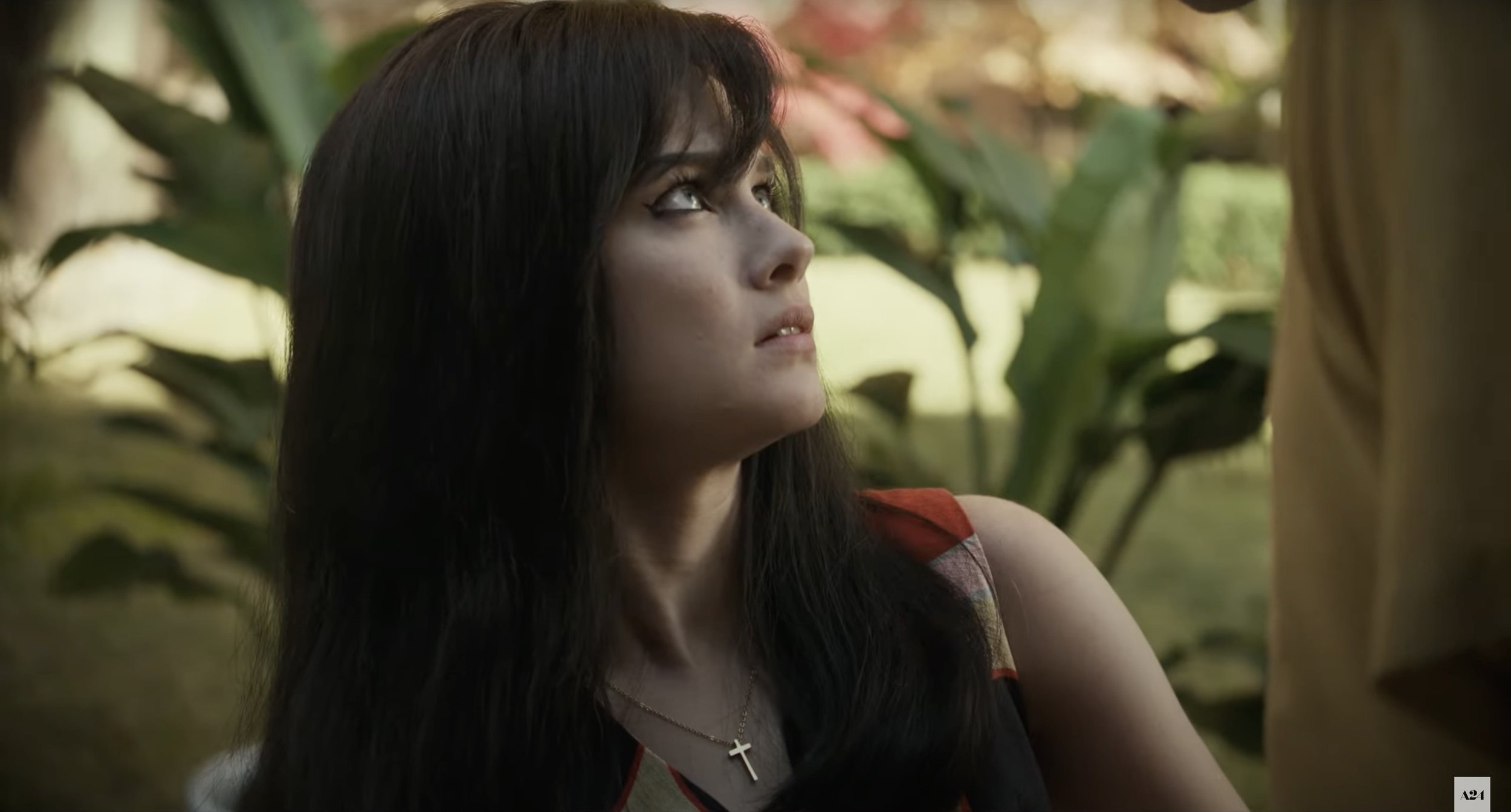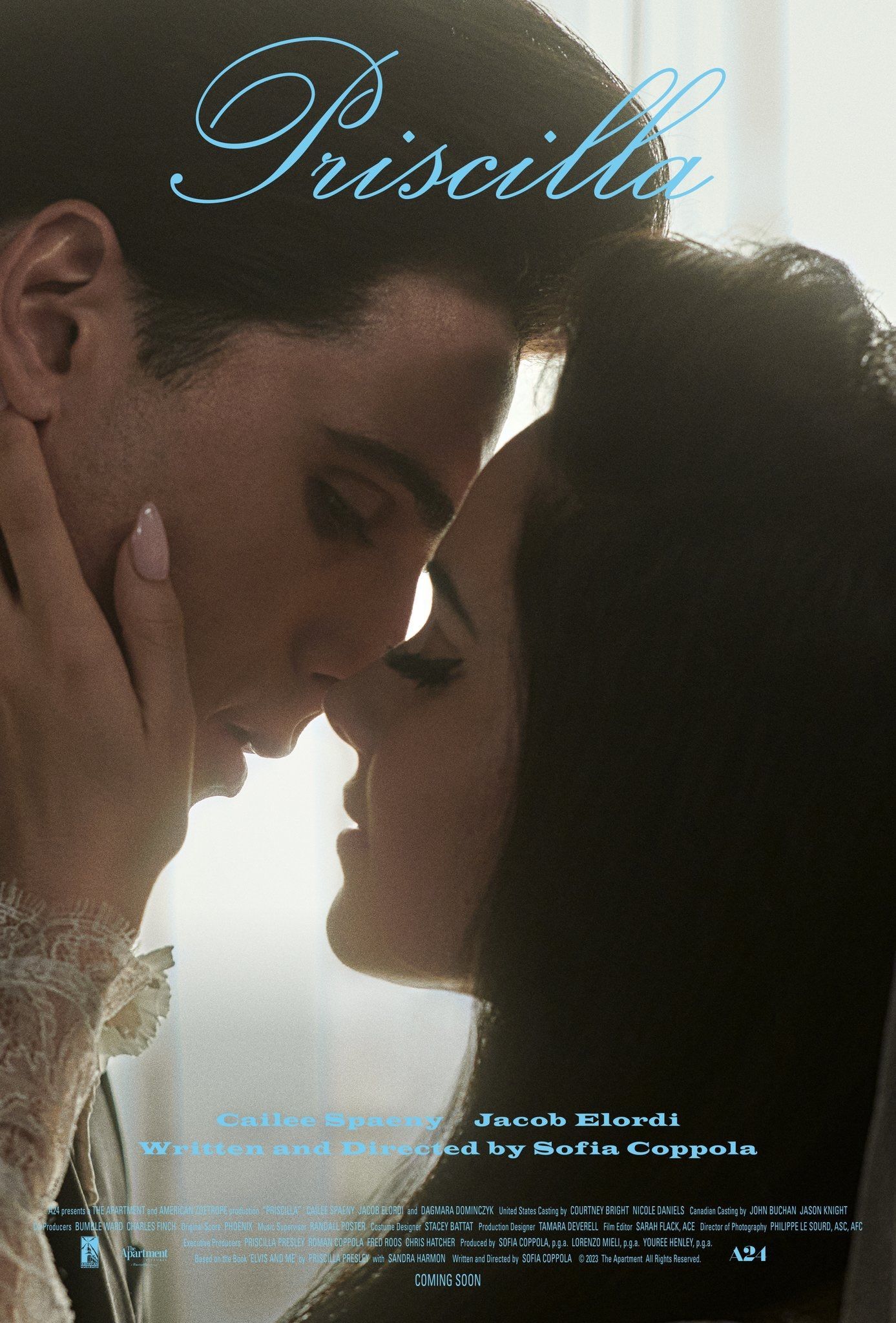Was Priscilla Shot On Film? Exploring The Movie's Distinct Look
Have you ever watched a movie and felt a special something about its look, a visual quality that just feels different? It's a question many film lovers ask, especially when a picture seems to have a certain warmth or a classic, almost dreamy feel. For fans of Sofia Coppola's latest work, "Priscilla," the question comes up quite often: Was "Priscilla" shot on film? That's a really good question, you know.
The choice of how a movie is captured, whether with traditional film or modern digital cameras, plays a huge part in its overall vibe. It's not just a technical detail; it truly shapes how the story feels to us, the viewers. A director's vision, so, is often deeply tied to these choices, aiming for a specific emotional connection with the audience.
Many people wonder about the visual qualities of "Priscilla" because it does have a very particular aesthetic. It feels almost like looking at old photographs, doesn't it? This distinct appearance leads to lots of curiosity about the tools used to make it. We'll look into this, and, you know, see what makes the movie look the way it does.
Table of Contents
- Priscilla Presley: A Life in the Spotlight
- The Look of Priscilla: Film vs. Digital
- Why Film Matters for a Story Like Priscilla
- Sofia Coppola's Cinematic Choices
- The Cinematographer's Role in Priscilla's Visual Style
- Frequently Asked Questions About Priscilla's Filming
Priscilla Presley: A Life in the Spotlight
Before we get into the technical details of the movie, it's pretty important to understand a bit about the person it portrays, Priscilla Ann Presley. Her life, you know, has always been a subject of great interest. The film really tries to capture her unique perspective, especially during her younger years with Elvis.
Priscilla's story is one of growing up in a very unusual situation, really. She met Elvis Presley when she was just 14 years old, and their relationship, and later marriage, put her right in the middle of a huge amount of public attention. This kind of life, so, can be quite overwhelming, and the movie aims to show that personal side.
Her time at Graceland, the famous estate, really shaped much of her early adult life. It was a world, apparently, that few people ever got to see up close. The film tries to let us feel what that might have been like for her, focusing on the more intimate and less public moments.
Later, Priscilla went on to have her own career paths, too. She became a successful businesswoman and an actress, showing her own strength and independence beyond her famous marriage. Her story is quite complex, you know, and offers a lot to think about.
Priscilla Ann Presley: Personal Details
| Detail | Information |
|---|---|
| Full Name | Priscilla Ann Wagner Beaulieu Presley |
| Birth Date | May 24, 1945 |
| Birth Place | Brooklyn, New York, USA |
| Spouse | Elvis Presley (m. 1967; div. 1973) |
| Children | Lisa Marie Presley |
| Occupations | Actress, businesswoman, author |
| Notable Roles | Jenna Wade in "Dallas", Jane Spencer in "The Naked Gun" series |
| Known For | Marriage to Elvis Presley, co-founding Elvis Presley Enterprises (EPE) |
The Look of Priscilla: Film vs. Digital
So, to get right to it: Was "Priscilla" shot on film? Yes, it was, actually. Director Sofia Coppola and cinematographer Philippe Le Sourd made the choice to capture the story using traditional motion picture film. This decision is a big part of why the movie looks and feels the way it does, you know.
The debate between shooting on film versus digital is a long-standing one in the movie world. Digital cameras offer a lot of convenience and flexibility, providing a very clean and sharp image. They are, so, very widely used today for many types of productions.
Film, on the other hand, has a unique texture and color quality that digital often tries to imitate but can't quite replicate perfectly. It has a certain grain, a way it handles light and shadow, that many filmmakers really love. It just has a different kind of feel, you know.
For "Priscilla," the choice of film was very deliberate. It helped to give the movie a timeless, somewhat nostalgic feel. This visual style helps to transport viewers back to the era the story is set in, making it feel more authentic to the period, you know, in a way.
The film stock used, along with the specific lenses and lighting, all work together to create the movie's distinctive look. It's not just one thing; it's a combination of many artistic and technical decisions. The overall aesthetic really tends to dominate the viewer's experience, actually.
Why Film Matters for a Story Like Priscilla
Choosing to shoot "Priscilla" on film was more than just a technical preference; it was an artistic decision that truly served the story. Film, in a way, has a certain softness and a way of rendering skin tones that can feel very intimate. This was important for a story that is so personal and focused on inner feelings, you know.
The film's visual style helps to create a sense of memory and nostalgia. When you watch it, it almost feels like you're looking at old home movies or faded photographs from the past. This feeling, so, helps to put you in Priscilla's shoes, looking back at her own experiences.
Film also handles colors in a very particular way, giving them a richness and depth that can be quite beautiful. The pastel tones and the specific mood of the 1960s and 70s are, you know, really brought to life through the film's unique color palette. It really captures the time.
Moreover, the grain inherent in film adds a subtle texture to the image. This isn't a flaw; it's a characteristic that many find appealing, making the picture feel more organic and less sterile. It gives it a very human touch, actually.
For a narrative centered on a young woman's isolation and experience within a gilded cage, the soft, dreamlike quality of film helps to convey that sense of being slightly removed from reality. It's a subtle way, you know, that the medium itself adds to the storytelling.
Sofia Coppola's Cinematic Choices
Sofia Coppola is known for her distinct visual style, and her choice to use film for "Priscilla" fits right in with her previous works. She often uses a very specific aesthetic to tell her stories, focusing on atmosphere and mood. Her movies, you know, often have a dreamy quality to them.
Many of Coppola's films, like "The Virgin Suicides" or "Lost in Translation," have a similar kind of visual softness and a focus on intimate moments. She uses cinematography to convey emotions and the inner lives of her characters, rather than just moving the plot along. It's a very intentional approach, really.
For "Priscilla," she wanted to capture the feeling of a young woman's perspective, almost like a fairy tale that turns a bit bittersweet. Film, with its unique characteristics, helps to achieve that delicate balance. It helps to control the overall tone of the picture, you know.
Her collaboration with cinematographer Philippe Le Sourd has been key to creating these signature looks. They work very closely to choose the right tools and techniques to bring her vision to the screen. It's a very strong partnership, actually, that shapes the final visual outcome.
This consistent approach shows her deep understanding of how visual elements can support a narrative. She knows how to make the camera and the film stock itself become part of the story, making the viewer feel what the characters feel. It's pretty amazing, honestly.
The Cinematographer's Role in Priscilla's Visual Style
Philippe Le Sourd, the cinematographer for "Priscilla," played a huge part in bringing Sofia Coppola's vision to life. He is the person who actually operates the camera and makes the decisions about lighting and composition. His choices, so, are very important to the final look of the movie.
Working with film, you know, requires a different set of skills and considerations compared to digital. Le Sourd had to carefully select the type of film stock, the lenses, and how to light each scene to get that particular aesthetic that Coppola wanted. It's a very precise process.
He aimed to create a look that felt both intimate and slightly melancholic, reflecting Priscilla's journey. The way light falls on faces, the softness of the backgrounds, and the overall color temperature were all carefully controlled. It's a real art, you know, to get that just right.
Le Sourd's previous work with Coppola on "The Beguiled" also used film, showing their shared preference for this medium to evoke specific moods and historical periods. They have a history of making visually rich films together. Their combined experience really helps to dominate the visual style.
The result is a film that feels cohesive and beautifully crafted, where every frame contributes to the emotional landscape of the story. The visual choices are not just pretty pictures; they are integral to the storytelling. You can Learn more about cinematography on our site, and learn about the history of film as well.
For instance, the way certain scenes are lit to emphasize Priscilla's isolation, or the use of shallow depth of field to focus on her inner world, are all choices made by the cinematographer. It's about crafting a feeling, you know, with light and shadow.
The specific film format chosen also plays a role. While the exact film stock might vary, the general decision to use celluloid helps to ensure that classic feel. It's a testament to their dedication to a particular kind of visual storytelling, you know, one that truly stands out.
This artistic partnership between director and cinematographer is, arguably, what makes the movie's look so memorable. It's a careful dance between technical knowledge and creative expression. They really manage to control the visual narrative, in a way.
You can find more details about film production and techniques on sites like Kodak Motion Picture Film, which is a great resource for understanding the technical side of film. It shows, so, how much thought goes into these kinds of decisions.
Frequently Asked Questions About Priscilla's Filming
What kind of camera was "Priscilla" shot on?
While specific camera models can vary, "Priscilla" was primarily shot using traditional film cameras, not digital ones. This choice was made to achieve a distinct, classic film look, you know. It really helps with the overall feel of the movie.
Why did Sofia Coppola choose to shoot "Priscilla" on film?
Sofia Coppola chose film for "Priscilla" to create a specific aesthetic that evokes a sense of nostalgia, intimacy, and a dreamlike quality. Film offers a unique texture and color rendition that she felt was essential for telling Priscilla's personal story. It really helps to transport you back in time, actually.
Does shooting on film make a movie look different?
Yes, shooting on film absolutely makes a movie look different. Film typically has a visible grain, a softer way of handling highlights, and a unique color response compared to digital. These characteristics give films a distinct, often more organic and timeless appearance. It's a very noticeable difference, you know.

PRISCILLA – Two-Shot Review – ZekeFilm

New Trailer for Sofia Coppola’s Priscilla Presley Film PRISCILLA

'Priscilla' Review — Sofia Coppola Underwhelms With Stale Biopic